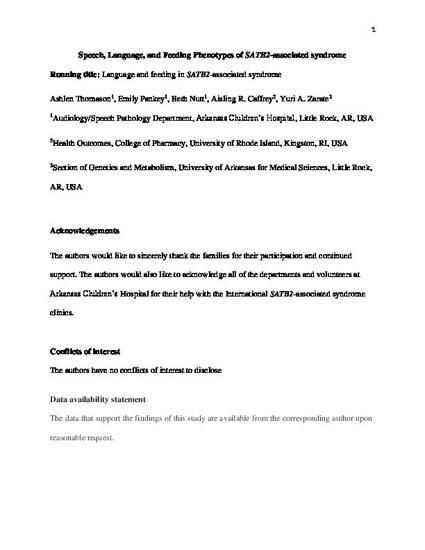
SATB2‐associated syndrome (SAS) is a recently identified disorder characterized by neurodevelopmental deficits and craniofacial anomalies. Assessments of speech, language, and feeding‐related issues were conducted among 61 individuals with SAS (median age = 86 months, range = 26 months to 29 years of age). Individuals with SAS were mostly non‐verbal communicators (72.1%) with severe deficits in both language comprehension and expression. The majority of individuals had receptive vocabulary skills of a child younger than 3 years of age. Based on parent report, the average spoken lexicon was 28.6 (SD = 84.6, n = 55) with a range of 0 to 500 (median = 5 words). All of the individuals with SAS with enough verbal ability either showed signs of childhood apraxia of speech or already had a diagnosis (n = 40) and 73.3% exhibited problems with reliable communication with unfamiliar partners. Hypernasal resonance (17.8%) due to velopharyngeal insufficiency secondary to a history of cleft palate and/or apraxic palatal movement (60.0% of hypernasal patients with no history of cleft palate), problems with chewing (68.2%), overstuffing the mouth with solids (64.9%), pharyngeal phase dysphagia (60.8%), and sialorrhea (63.3%) were common in this population. Mutation type was not predictive of receptive or expressive language abilities. We developed language and communication treatment recommendations based on these findings.
Thomason, A., Pankey, E., Nutt, B., Caffrey, A. R., & Zarate, Y. A. Speech, language, and feeding phenotypes of SATB2‐associated syndrome. Clin Genet., 96(6), 1– 8. doi: 10.1111/cge.13619
Available at: https://doi.org/10.1111/cge.13619
